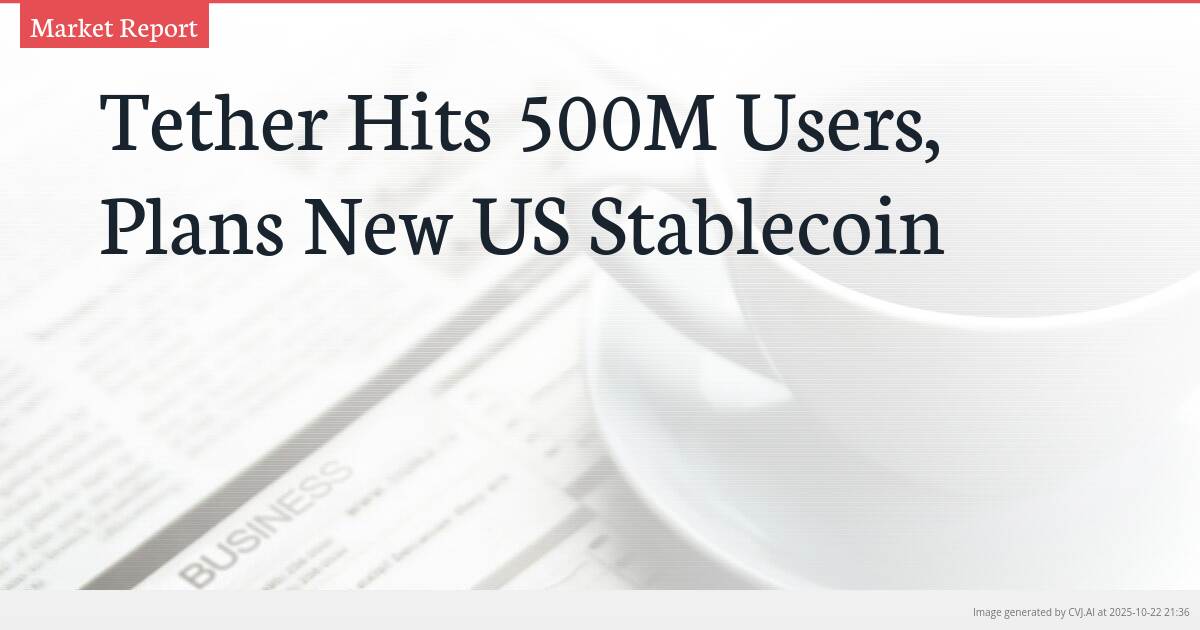This summary text is fully AI-generated and may therefore contain errors or be incomplete.
Introduction
Tether’s USDT stablecoin has achieved a monumental milestone, serving 500 million users worldwide as the company solidifies its dominance in digital finance. Driven by explosive growth in emerging markets and strategic community engagement, USDT’s circulation now stands at approximately $182 billion, dwarfing competitors like Circle’s USDC at $75 billion. The announcement comes alongside plans for a new dollar-backed stablecoin targeting the US market and a record $4.9 billion Q2 profit, positioning Tether among the world’s most valuable private companies.
Key Points
- Tether reported record Q2 profit of $4.9 billion and plans to raise $20 billion at a $500 billion valuation
- The GENIUS Act establishes federal stablecoin regulation requiring full dollar backing and annual audits for issuers over $50 billion market cap
- EU's MiCA regulations require exchanges to stop offering non-compliant stablecoins like USDT by April 2025, creating European market challenges
Global Expansion and Emerging Market Dominance
Tether CEO Paolo Ardoino revealed that USDT now serves 500 million users globally, marking a significant achievement in the stablecoin’s rapid expansion. The growth has been primarily fueled by strong adoption in emerging economies across Africa, Southeast Asia, and Latin America, where USDT has become integral to remittances and everyday financial transactions. Ardoino emphasized that direct engagement with local communities has been crucial to integrating the stablecoin into daily life beyond centralized exchanges and traditional financial apps.
The company’s grassroots adoption strategy has proven particularly effective in underdeveloped and underserved regions, where traditional banking infrastructure remains limited. USDT’s use in retail payments and peer-to-peer transfers has maintained steady growth, cementing its position as a vital financial tool in markets where currency volatility and banking accessibility pose significant challenges. Ardoino described programmable money as “the ultimate social network,” highlighting its dual function as both information and value transfer mechanism.
Strategic Expansion and Financial Performance
Tether is planning to launch a new dollar-backed stablecoin specifically for the US market, with Bo Hines, CEO of Tether’s US arm, confirming the company will not seek external funding for the project. Instead, Tether will issue new equity while existing investors retain their shares, maintaining control over the venture. This strategic move comes as the company prepares for a potential $20 billion fundraising round at a $500 billion valuation, which would place Tether among the world’s most valuable private firms alongside SpaceX and OpenAI.
The company’s financial performance underscores its market position, with Tether reporting a record Q2 profit of $4.9 billion, surpassing its previous record of $4.54 billion. This profitability is complemented by Tether’s status as one of the largest holders of US government debt, providing substantial backing for its stablecoin operations. The current USDT supply of approximately $182 billion demonstrates the scale of Tether’s market dominance, significantly outpacing Circle’s USDC at $75 billion.
Regulatory Landscape and Competitive Challenges
The GENIUS Act, signed into law by President Donald Trump with Ardoino in attendance, establishes a federal regulatory framework for stablecoins requiring full backing by US dollars or similarly liquid assets. The legislation mandates annual audits for stablecoin issuers with market capitalizations exceeding $50 billion, a threshold Tether comfortably surpasses. This regulatory clarity has prompted several major financial institutions, including JPMorgan, Bank of America, Citigroup, and Wells Fargo, to consider launching their own stablecoins, potentially challenging Tether’s market leadership.
Despite acknowledging that new competitors might surpass Tether in the short term, Ardoino maintains that the company possesses superior technology and deeper market understanding. However, Tether faces regulatory hurdles, particularly the requirement for comprehensive audits from major accounting firms like PwC or Deloitte. Currently, Tether relies on quarterly attestations by BDO Italia, though Ardoino has identified securing a full audit from a Big 4 firm as a key priority.
European markets present additional challenges following the implementation of MiCA regulations, which require exchanges to cease offering non-compliant stablecoins by April 2025. Since USDT does not currently meet MiCA’s regulatory requirements, Tether faces potential exclusion from European markets unless it achieves compliance. This regulatory pressure comes as Tether continues to expand its global footprint while navigating increasingly complex international regulatory environments.
📎 Read the original article on co.uk

